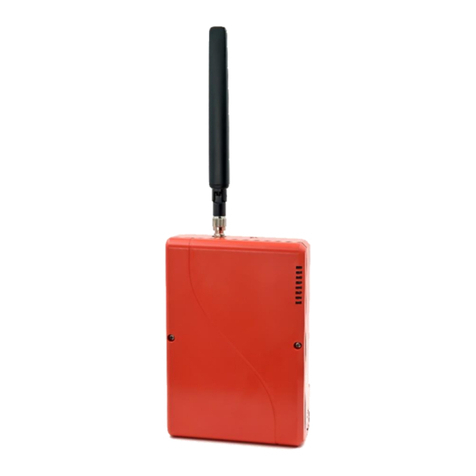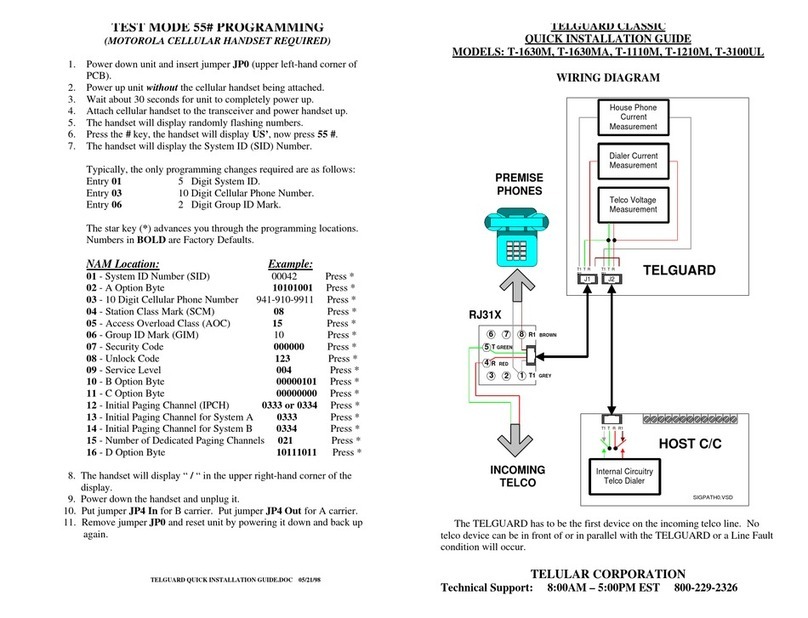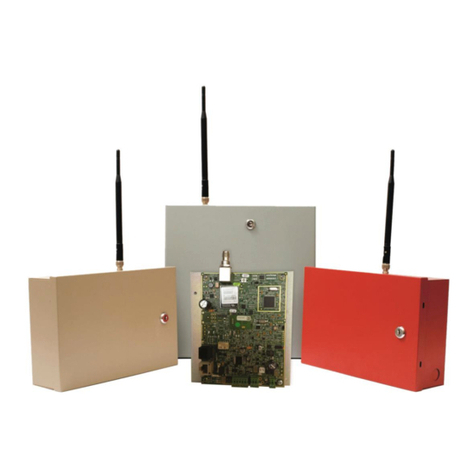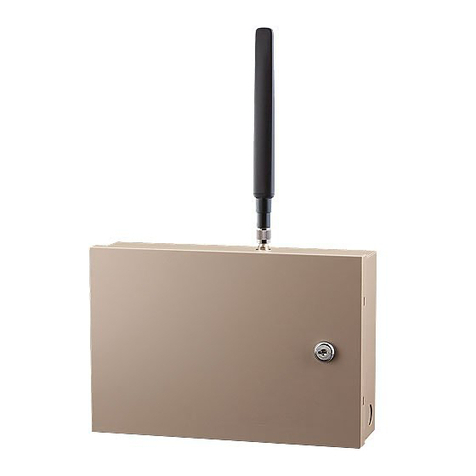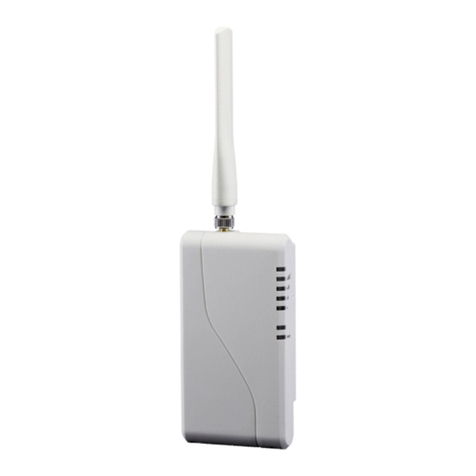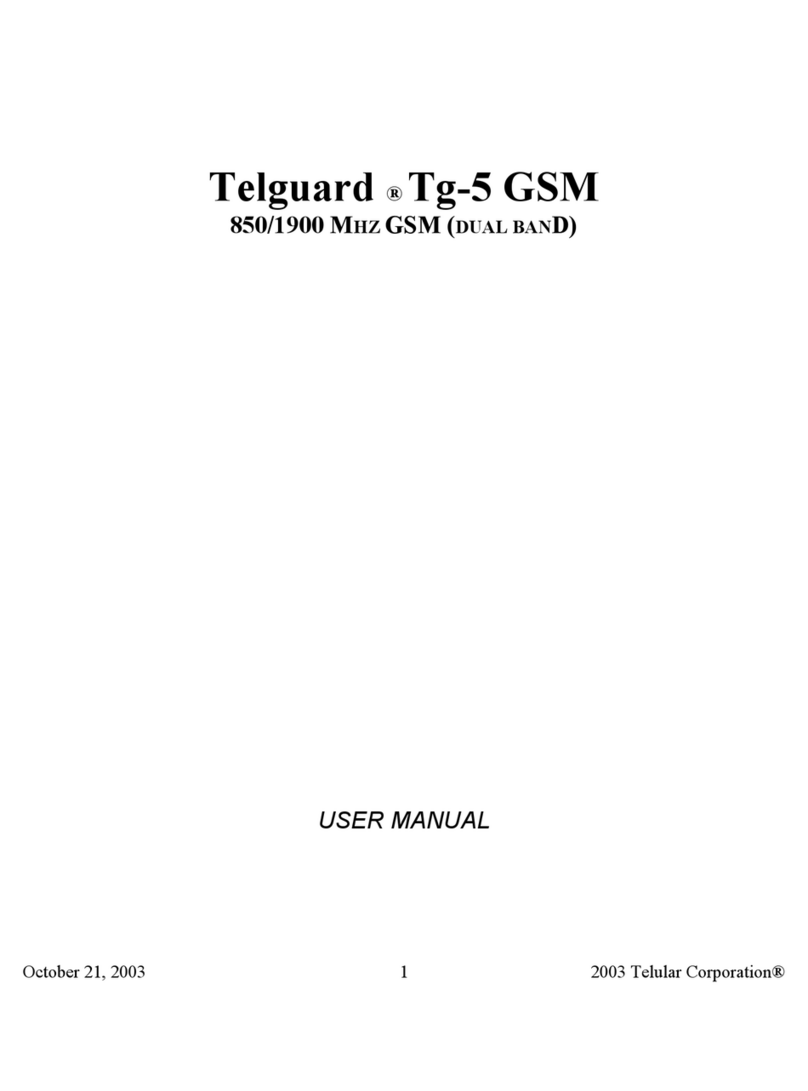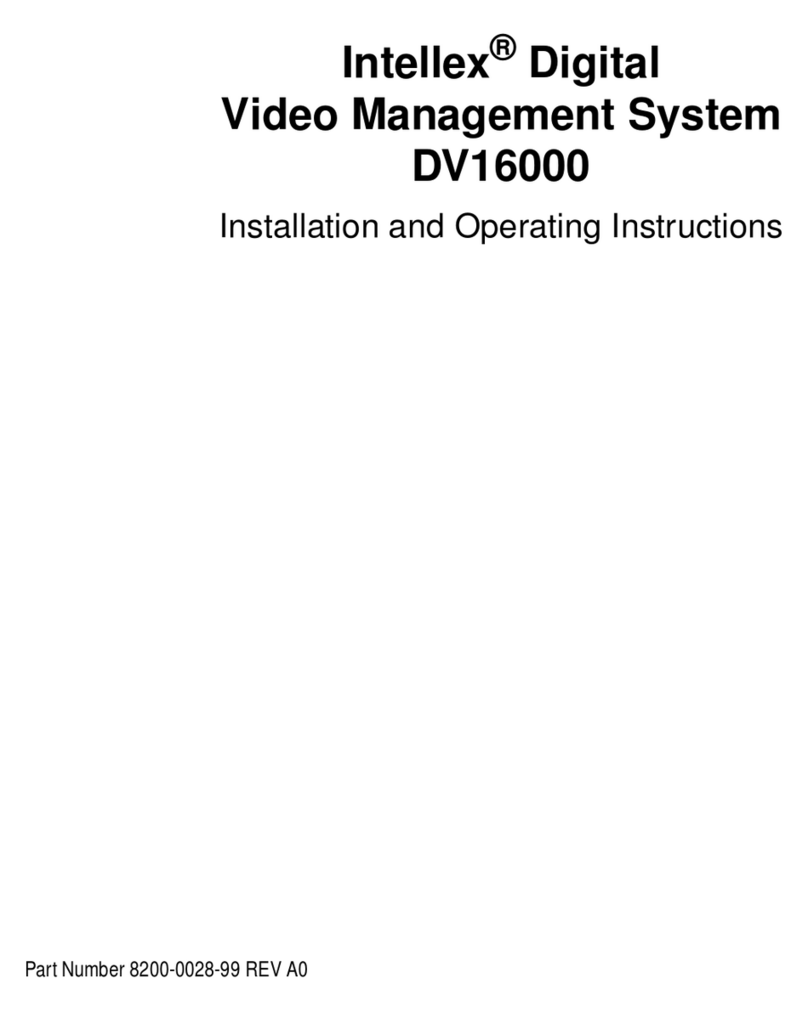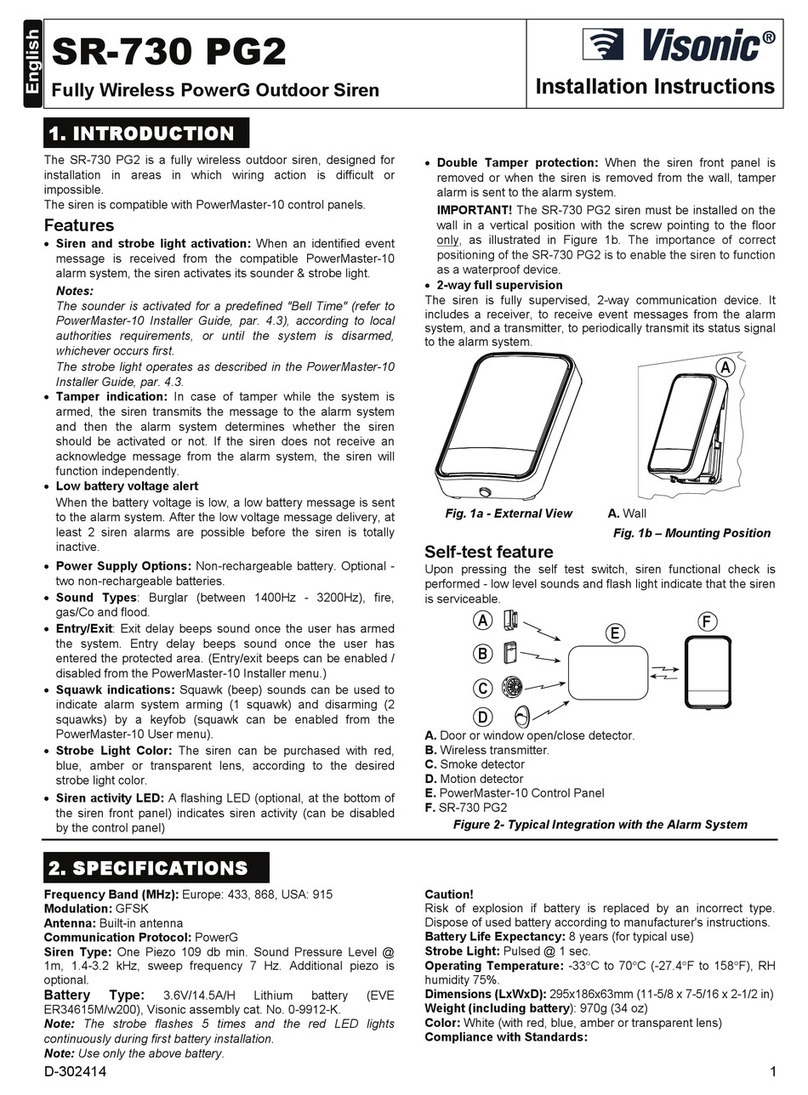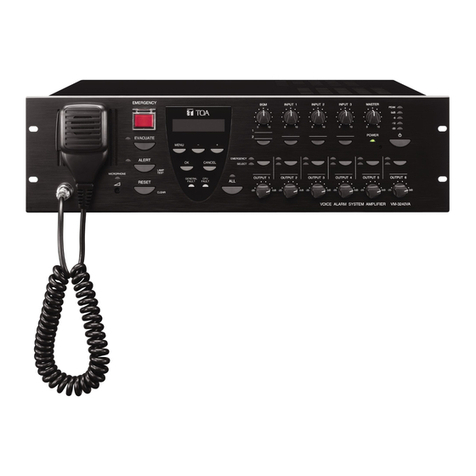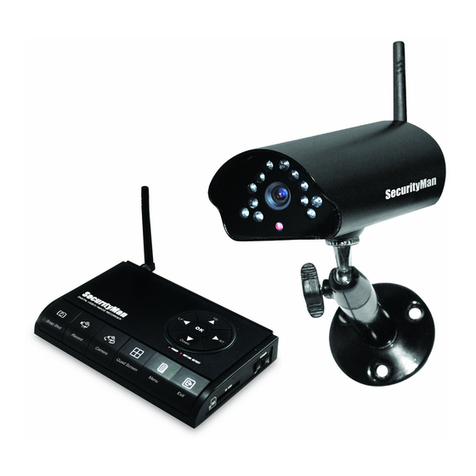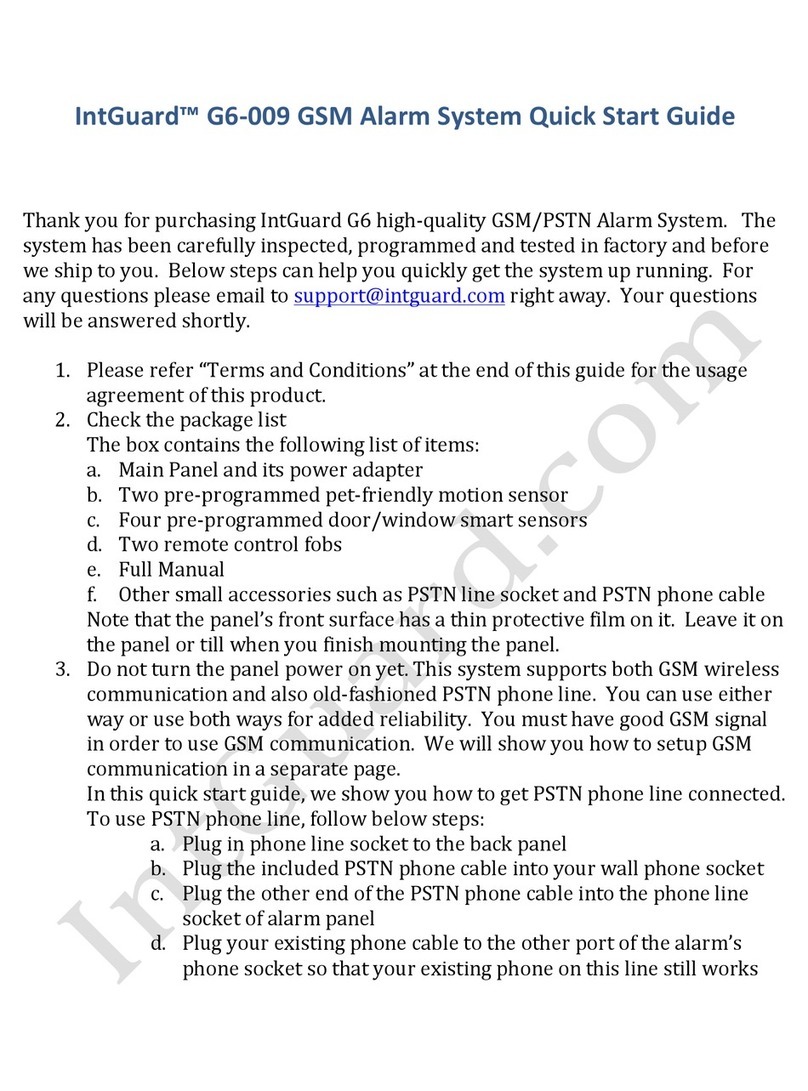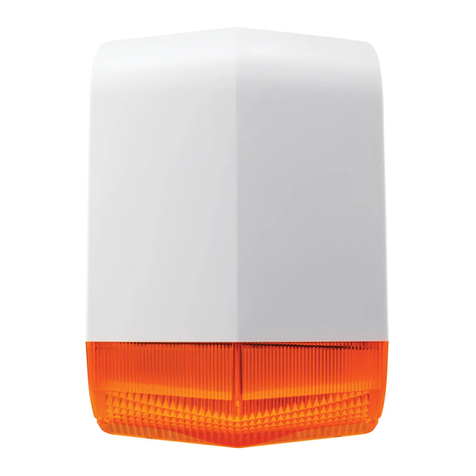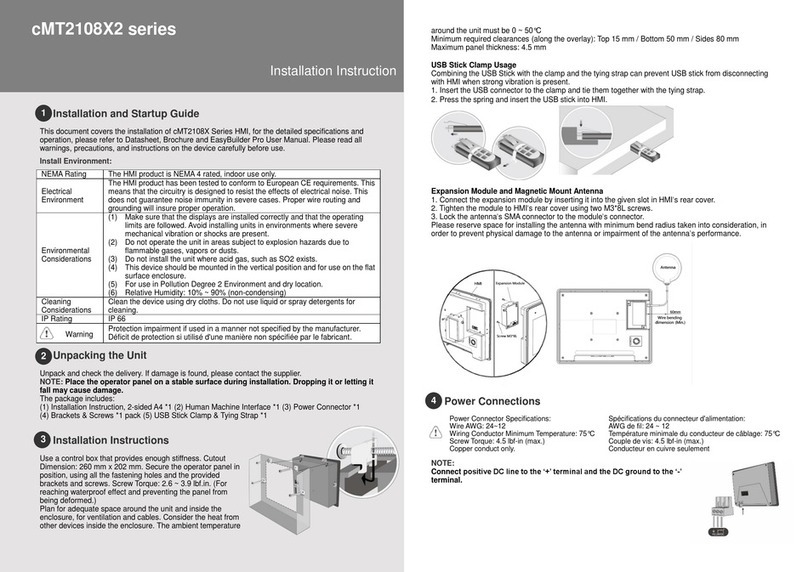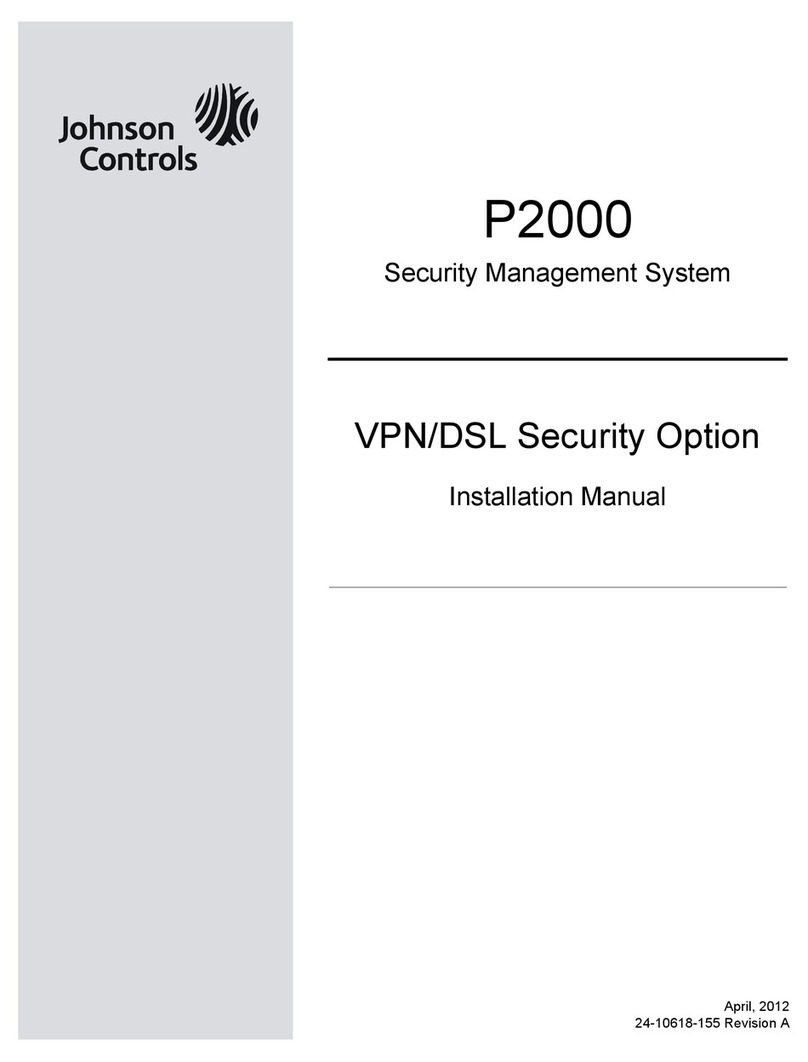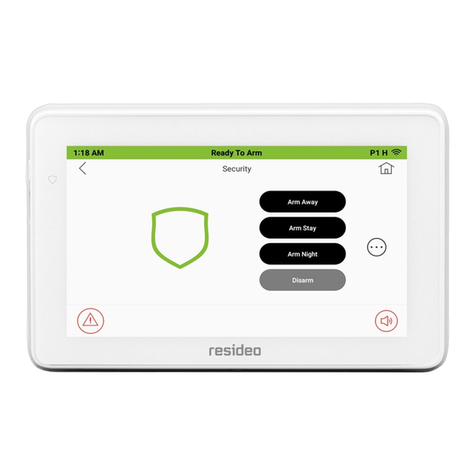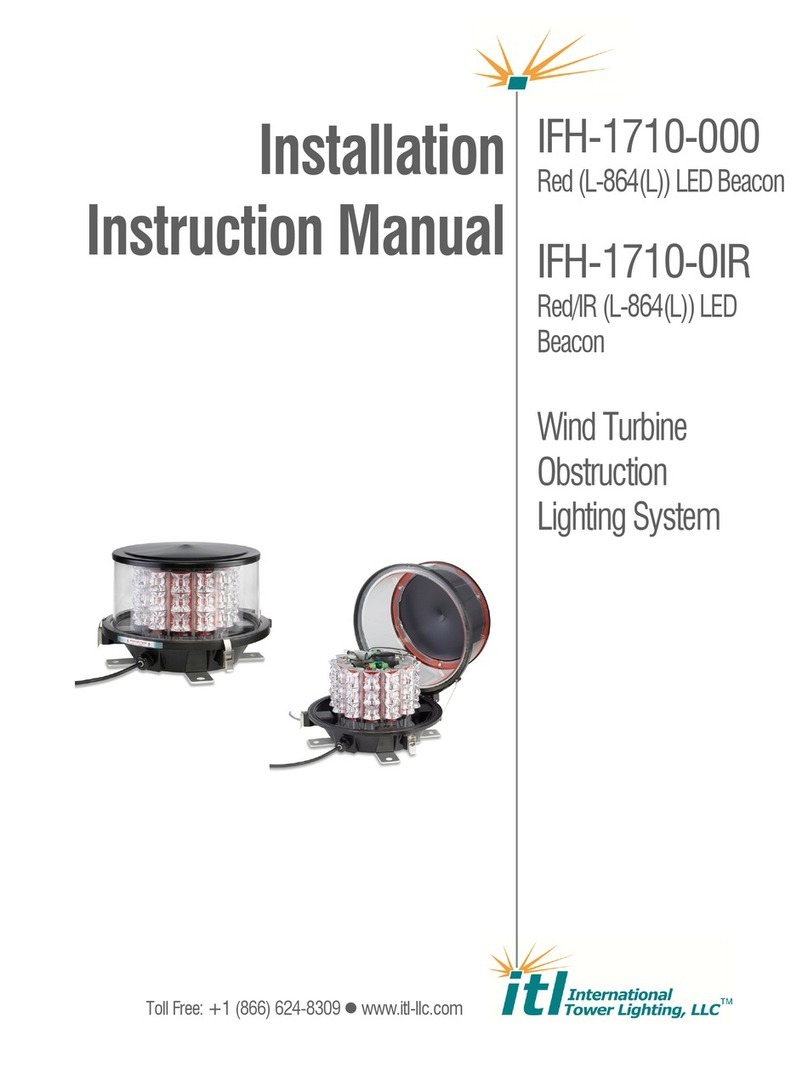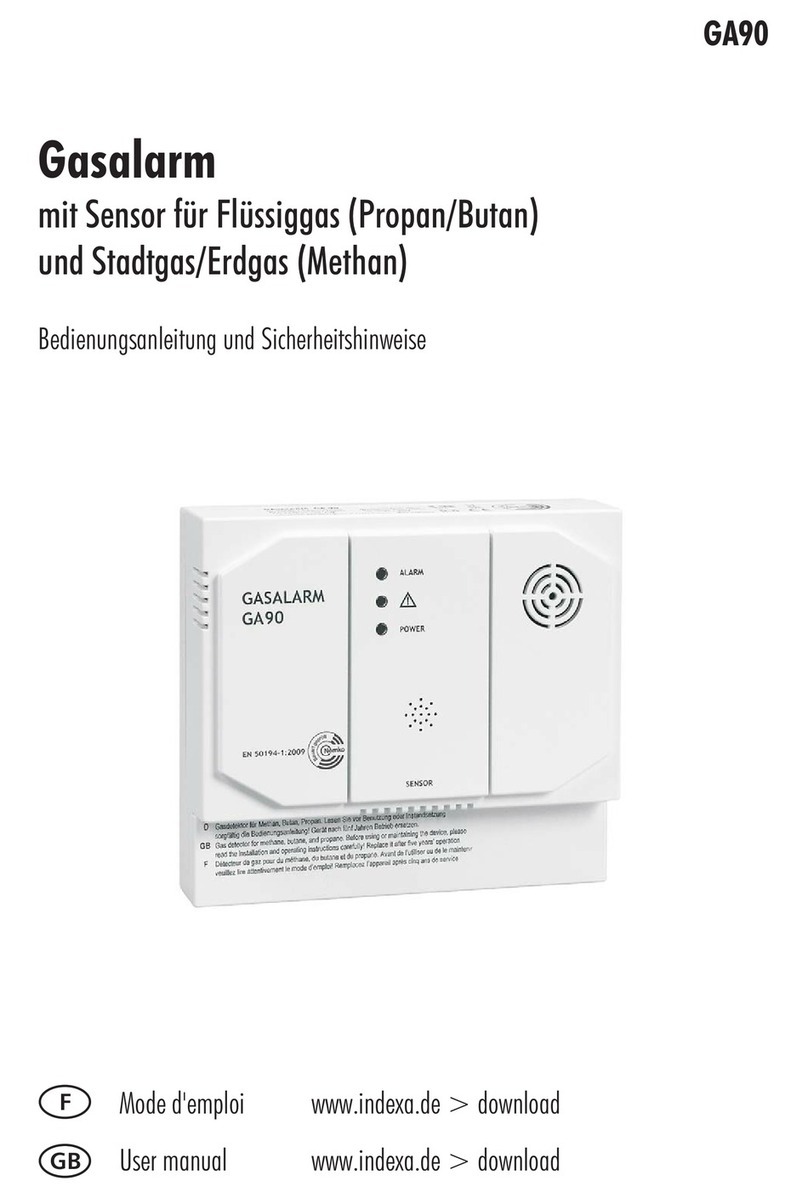56050501 –Rev D 4 © 2020 Telguard
No Service Condition (NSC)
A no service condition (NSC) occurs when the Telguard device is unable to register with the cellular network.
NSC can be configured to trip the supervisory relay output (STC relay) after a programmable period of time. The STC LED
will flash 4 times immediately after losing cellular service and dial-tone will cease to be provided, independent of the STC
assertion and programmed assertion delay. NSC restoral occurs immediately after cellular service has been acquired.
Radio Communications Failure Condition (RFC)
Radio communications failure condition (RFC) occurs when the Telguard device is unable to transmit over the cellular
network even with acceptable signal strength. When RFC is declared, the STC LED will flash 5 times, dial-tone will cease,
and the STC relay will trip as programmed. Restoral of this condition occurs after 10 minutes or when a message is
received from the TCC.
Note: When End-to-End acknowledgement feature is enabled, a message that fails to deliver to the Central Station will
trigger an RFC condition.
Panel Presence Failure (PPF)
Panel presence failure condition (PPF) occurs when the Telguard unit is unable to detect the presence of the alarm panel.
PPF is indicated by the STC LED flashing 7 times. A supervisory report is generated and sent to the TCC for Central Station
delivery upon detection of PPF. Restoral of this condition occurs when the alarm panel is detected as present for the
selected delay time.
Note: The factory default for PPF is Disabled and needs to be Enabled for its use. For the PPF feature to work, Tip, Ring,
and the return connections for Tip and Ring must be connected between the panel and the Telguard device.
Control Failure to Communicate (CFC)
The Control Failure to Communicate (CFC) feature is an option that allows the Telguard unit to monitor the number of
communication attempts the alarm panel makes over Telco before the Telguard unit becomes the main path of
communication. This feature works by monitoring the alarm panel from the time it goes off-hook, and attempts to
communicate, to on-hook status, and comes off-hook again. Each change in state by the alarm panel from off-hook to on-
hook to off-hook again is considered an attempt. If this continually happens for a specified number of times within a
specific time period, the TG-7 series device seizes the line and takes over as the main communication path for the alarm
panel. If the Telguard unit goes into CFC, then it will not allow the panel to communicate via Telco again until the panel
has been on-hook for 10 consecutive minutes.
Note that the CFC condition causes the Telguard device to redirect communications to the cellular channel, but it is not
indicated on the STC LED, nor does it cause either of the external relays to be tripped.
Note: The factory default for CFC is Disabled and needs to be Enabled for its use. When the TG-7 is configured as the
Sole Path, the CFC function is not applicable.
Link Supervision and Standard Line Security
In some high security commercial burglary applications, the communication path needs to be monitored periodically. TG-7
models support those applications when Link Supervision feature is enabled. When this feature is enabled, TG-7 models
also meet the requirements for Standard Line Security (equivalent to previously known AA Grade security) when used with
a UL Listed compatible alarm panel. Once the TG-7 model is provisioned with the Link Supervision option, the TCC
constantly monitors the cellular path and sends a specific message to the central station if the path is broken or a
compromise attempt is made. After the initial account activation is done, the installer must verify the Link Supervision by
turning off the device and making sure an alarm with the specific code is delivered.
WARNING: Standard Line Security has only been evaluated between the TG-7 and the TCC. It is the responsibility of the
installer to verify Standard Line Security from the Listed alarm panel to the Listed receiver through the TG-7 models as
marked on the alarm panel and as indicated in the manufacturer's installation instructions.





















